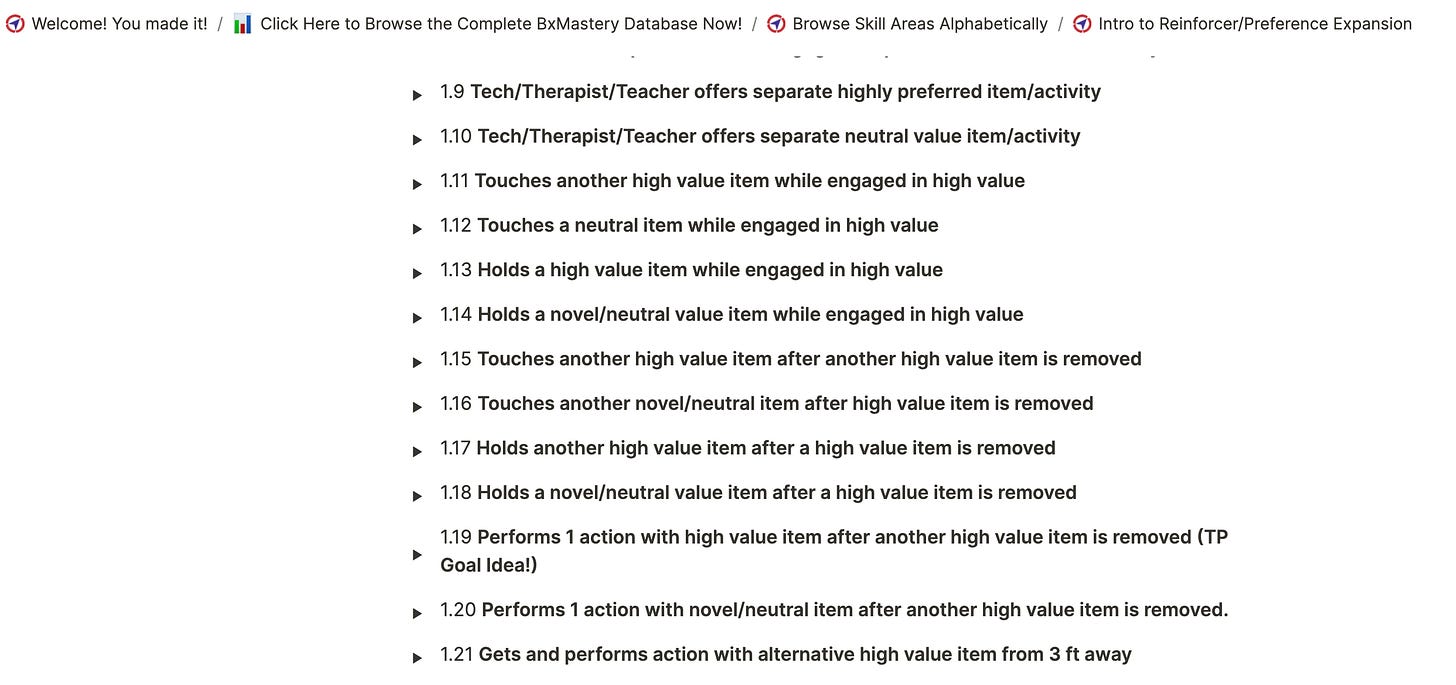Why Teaching Skills Alone Isn’t Enough: The Power of Exploration
Happy Friday! First, I had GREAT fun nerding out about leadership in ABA with Stephen and April over at 3 Pie Squared! If you’d like, check out their website here! Also, here’s the link to the full podcast! And I’ve included one of the many quick hitters here!
It’s a realization that hit me a few years into my behavior analysis journey and completely reframed how I think about our work.
Maybe it hit you, as well. I was taught—and taught correctly—that our job is to teach skills and reduce problem behavior. Simple enough on paper, right? But what liberated and empowered my clinical world was the moment I realized these two goals weren’t just separate objectives. They were (and are) deeply intertwined, and understanding that relationship can transform how we approach behavior change.
Think about it—problem behaviors often stem from a lack of skills. A child tantrums so they can play with a train that another peer is playing with. Not because they want to tantrum, but because they don’t yet have the communication skills to say, “I want the train.” Teach them how to ask for it, and the tantrums decrease. This connection between skill acquisition and behavior reduction is empowering. It means every new skill we teach potentially chips away at the need for that learner to engage in tantrum behavior. The more skilled someone becomes, the less likely they are to rely on maladaptive behaviors to navigate the world. That realization alone can be life-changing—for you and the people you work with.
But here’s where it gets interesting: our work doesn’t stop at skills and reduction. There’s a third, often overlooked dimension that’s just as crucial—reinforcement expansion.
While teaching skills and reducing problem behavior are essential, they don’t guarantee a thriving, joyful life. True quality of life comes from the ability to find reinforcement in a variety of experiences. If someone’s happiness depends on just one or two reinforcers—like a tablet or trains—they’re not thriving. They’re trapped in a dependency. And dependency can be a problem when those reinforcers aren’t available. What happens when the tablet dies? Or the train set isn’t around? Meltdowns, frustration, and stalled momentum.
That’s where we need to shift our focus. Reinforcement expansion is about teaching learners to see the world as full of opportunities for reinforcement. This means fostering curiosity and exploration, helping them move beyond rigid preferences. This isn’t easy—it’s far more comfortable to rely on the same high-value reinforcers over and over again. But if we don’t challenge that dependency, we’re setting them up for a limited future.
Here’s a practical example: let’s say a child is highly motivated by their tablet. It’s their favorite thing, and you’ve used it to teach a ton of new skills. The good news: You taught lots of skills. Like, they can do a ton of things independently. The bad news? It’s the only thing of interest in their life. For them, joy and effort are completely contingent on that iPad being available. If that reinforcer isn’t available, they won’t engage in those behaviors you’ve taught them, and they will lose those skills.
So, that means you need to target ways to expand that learner’s repertoire at the same time that you are teaching skills.
For example, instead of always using the tablet as a reward after tasks, bring it into a playroom. Wait and watch for them to engage in “explorational” and “curious” behaviors—maybe they glance at a toy, touch a book, or walk toward a peer. Reinforce that exploration—even the smallest indications by giving the tablet back. Over time, they’ll start to recognize that the tablet’s return is contingent on them shuffling through the toy box or flipping through a book. And, hopefully, with enough browsing, a few of those toys become mainstays in their lives. You’re not just teaching skills anymore; you’re teaching them how to experience the world.
This process is what I call reinforcement expansion, and it’s a game-changer. By pairing high-value reinforcers with exploratory behaviors, you can broaden a learner’s preferences and help them find joy in new and unexpected places. Think about it—life isn’t just about having skills or avoiding meltdowns. It’s about thriving. And thriving means being able to find happiness in a variety of situations, not just in the presence of a handful of preferred items. If we can teach learners that exploration itself can be reinforcing, we’re setting them up for a much richer, more fulfilling life.
If this resonates with you and you’re looking for actionable steps, I’ve got tools to help. Over at bxmastery.com, I’ve created resources designed to guide you through the process of reinforcement expansion. At less than $3 a month, it includes dozens of pairing goals and strategies to help you implement this in your practice (along with over 4,000 target possibilities). Remember, teaching skills and reducing problem behaviors are important—but they’re not the whole picture. To truly transform lives, we need to expand what reinforcement means for our learners.
Martin Myers is a BCBA with a passion for helping improve the field of ABA. He is the creator of BxMastery, with over 4,000 goal ideas, sequenced, to inspire your programming. With 10+ years of experience in the field, he’s dedicated to empowering others and fostering positive change through effective leadership and communication. Connect with Martin on LinkedIn, Facebook, Instagram, and TikTok for more insights and updates.




